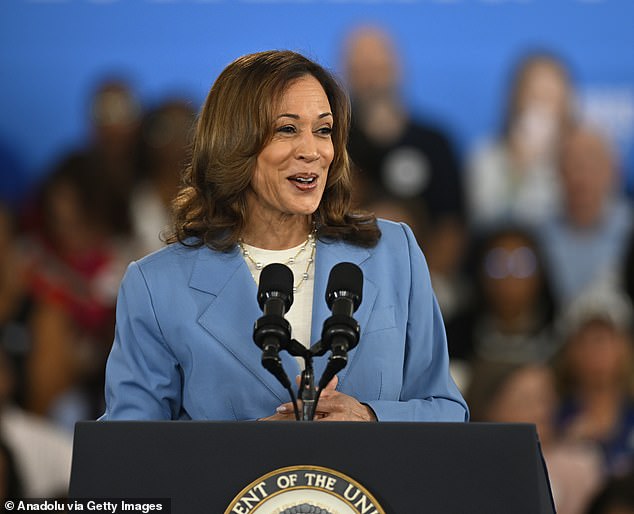Vice President Kamala Harris has closed the gap on former President Donald Trump in four key states.
New findings from The New York Times suggest the two presidential candidates are now in tight races in Arizona, Georgia, Nevada and North Carolina.
Just weeks ago, Trump looked set to win these states, but new polls show Harris gradually erasing his lead.
In Georgia, he still has the lead with 50 percent to her 46 percent, and in Nevada, it’s 48 percent for him and 47 percent for Harris.
Harris has won 49 percent of the vote to Trump’s 47 percent in North Carolina, one of the key swing states he won in 2020.
New findings from The New York Times suggest the two presidential candidates are now in tight races in Arizona, Georgia, Nevada and North Carolina.
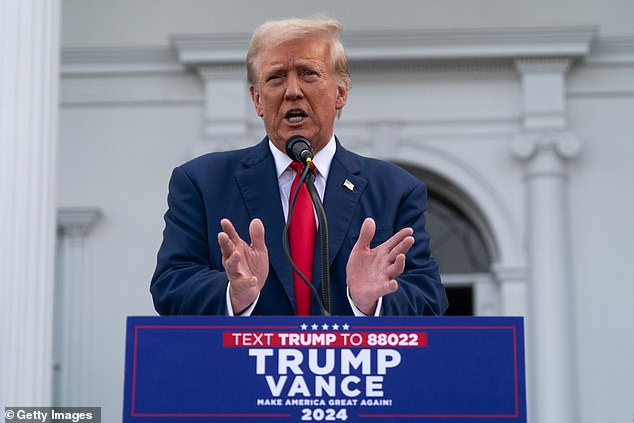
Trump looked set to win these states just a few weeks ago, and the new findings show Harris closing in on his lead.
Polls continue to show some risks for Harris, including that 49 percent of voters consider her too liberal, while 33 percent consider Trump too conservative.
Meanwhile, Democratic voters are now enthusiastic about Harris’s candidacy, with 85 percent saying they are excited to vote for her. This roughly matches the level of voter enthusiasm for Trump.
Harris, who would be the first black woman to serve as president, has the support of 84 percent of black voters, according to polls.
That’s higher than the support President Biden had when he dramatically dropped out of the race just weeks ago.
Meanwhile, her support among Latino voters stands at 54 percent, and she has taken a 14 percentage point lead over Trump among women in Arizona, Georgia and Nevada.
Harris now leads nonwhite voters in those three states by 29 points, while Biden was leading those voters in the same states by 17 points in May of this year.
Meanwhile, Trump is maximizing his support among white voters without a college degree, garnering 66 percent of their support in Sun Belt states.
Harris also has a 13-point lead over Trump among TikTok users in Arizona, Georgia and Nevada, indicating her online traction among younger voters.
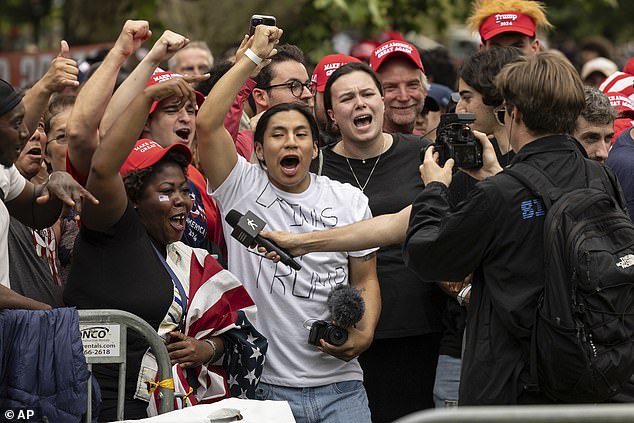
Trump supporters gather before a campaign rally in the Bronx borough of New York in May of this year.
Voters gave both candidates a 48 percent favorable rating. In a February poll, voters had a more unfavorable view of Harris.
Despite the positives, Trump maintains the lead among voters on what will surely be two key issues in the race for the White House: the economy and immigration.
Voters ranked these as the most important facing the nation, but the two are closely tied on the question of who would best handle those issues.
Polls show Trump remains the favorite on economic issues, but his standing has fallen considerably since Biden dropped out of the race.
Meanwhile, Harris had widened the Democratic lead over Trump on the abortion issue.
Voters have more confidence in Trump when it comes to immigration, leading Harris by 53 percent to his 43 percent.
When third-party candidates were included, the state of the race in the states did not change: Robert F. Kennedy won just 4 percent of likely voters.
A significant number of voters believed Trump would be a stronger leader and would make a difference.
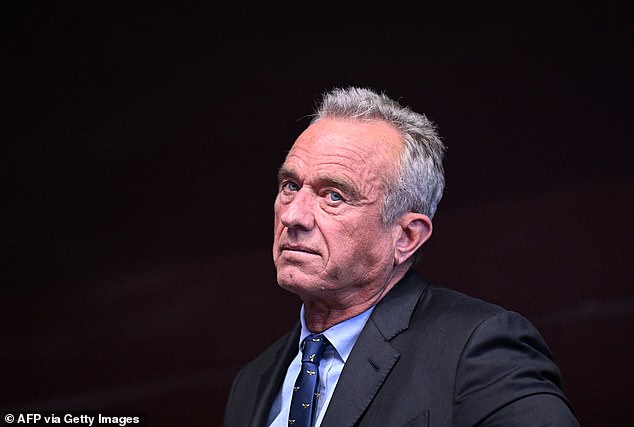
When third-party candidates were included, the state of the race in the states did not change, with Robert F. Kennedy, seen here, garnering just 4 percent of likely voters.
When asked “Who cares about people like me?” Harris had a slight lead over Trump, 52 percent to 48 percent.
Alina Szmant, 78, a Democrat and retired scientist from Wilmington, North Carolina, told The Times she was excited about the prospect of voting for the first female president.
She said: ‘Kamala is well-prepared to be an excellent president. As for Biden? She would have voted for him mainly because of her dislike of Trump.
“(Biden) wasn’t my first choice. He wasn’t even my second, third or fourth choice.”
Meanwhile, Sergio Villavicencio, a Navy veteran who lives in Arizona, told the Times he voted for Trump in 2016 and then for Biden in 2020.
The 40-year-old now plans to support Harris because she seems more concerned about her problems.
He said, ‘If that person is supposed to represent all of us, and he chooses who he represents, billionaires and Elon Musk and all these kinds of corporations.
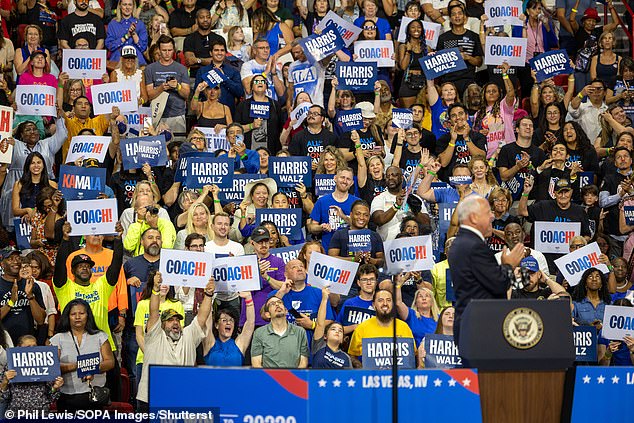
Supporters of Harris and vice presidential candidate Minnesota Gov. Tim Walz hold signs during a campaign rally at the Thomas & Mack Center in Las Vegas
“He doesn’t speak for the people. (Trump) doesn’t speak to the people. He doesn’t give a damn about the people.”
Last week, the Times published a survey showing how Harris had led Trump by four points in Michigan, Pennsylvania and Wisconsin.
Among likely voters in each state, 50 percent said they would likely vote for Harris, while 46 percent said they would vote for Trump.
According to the new figures, Harris has erased the lead Trump was building in states before President Biden dropped out of the race.
The first presidential debate between the two will be held in Philadelphia on September 10 and will be moderated by ABC News.
The first vice presidential debate between Democratic Gov. Tim Walz of Minnesota and Republican Sen. J.D. Vance of Ohio will take place Oct. 1 in New York City and will be broadcast on CBS.


